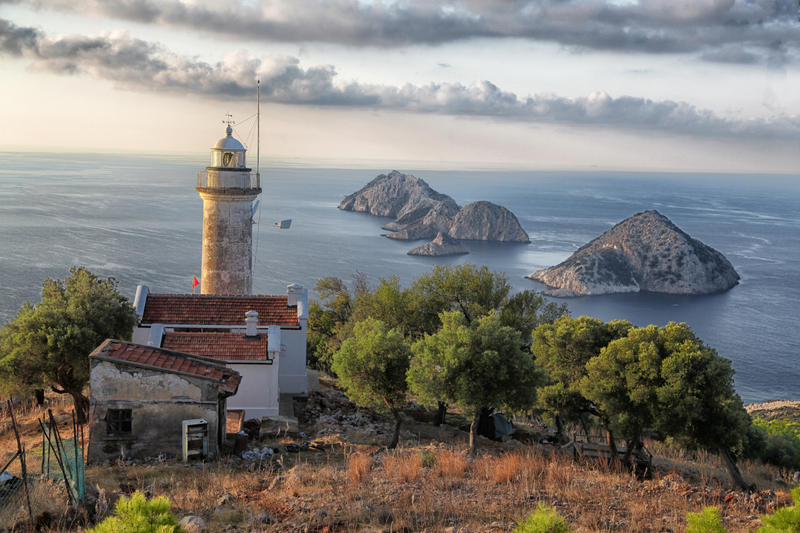
From the small pebbly beach at Karaöz, an obvious dirt road heads south along the coast towards the cape. Roughly 6.5km along, leave the track in favour of the marked Lycian Way, now a steadily rising path through oaks and pines. From the trailhead, a round-trip of just under an hour (with a daypack) will take you to the photogenic lighthouse just above Taşlık Burnu (as Gelidonya Burnu, “Swallow Cape”, has been officially renamed). Built by the French in 1936, the lighthouse is not currently inhabited, but a keeper cycles out from Karaöz at dusk to light the lamp. The treacherous Beş Adalar (Five Islands) that straggle beyond the cape are shipping hazards that have caused many a wreck, including an ancient one that yielded a huge amount of treasure to archeological divers during the 1960s.
North of the lighthouse, the Lycian Way threads deserted hillside between the sea and a high ridge on its 6hr course to Adrasan (path or cross-country except for the final hour). This dramatic stretch has become a popular organized group target, so you’ll probably have company
Gelidonya Lighthouse, located to the west of Antalya between the Adrasan and Karaöz inlets, was built by the French in 1936. The lighthouse scans the area using three powerful lights that rotate every 10 seconds. The road leading to the lighthouse is also used for trekking and ends at the seashore, where the Beş Adalar (Five Islands) is located. Gelidonya Lighthouse is also situated on the ancient Likya Road, making it a favorite route for tourist trekking tours. After a long, tiring but pleasing trek it's possible to swim in the sea surrounding the Five Islands. The lighthouse is located on a peninsula rich in fauna, trees, flowers and herbs. The Five Islands, which are ideal for diving and sea sports, is the scene of a shipwreck that occurred around 120 B.C. Between 1960 and 1980, the ship was raised from the depths by a crew led by George F. Bass, professor emeritus and previous holder of the George T. and Gladys H. Abell Chair in Nautical Archaeology at Texas A&M University. He is one of the leading pioneers in the field of underwater archaeology
No comments:
Post a Comment